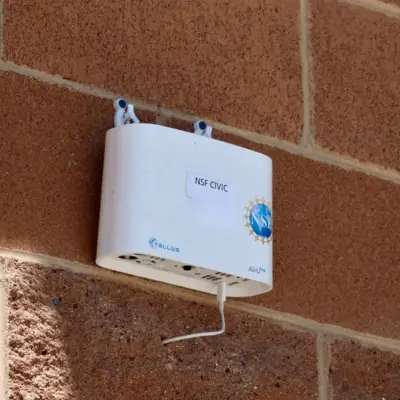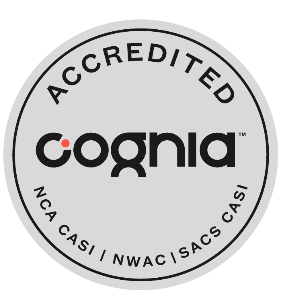While no one is immune from the harmful effects of air pollution, children, with their still-developing airways, and high school athletes who spend a lot of time training in the outdoors, are especially vulnerable.
In the mountain-rimmed Salt Lake Valley, which is geographically prone to bouts of air pollution, having access to comprehensive air quality data is critical for schools in determining when to halt outdoor recess or postpone sports practices and competitions.
However, there isn’t as much readily available data as scientists and educators would like, which is why Canyons is partnering with the University of Utah on a project to install more air quality sensors on high school athletic fields throughout the state.
“Our students’ performance inside and outside the classroom depends on their health, and if they’re inadvertently exposed to air pollution, their performance and health suffers,” said Canyons Director of High Schools Tom Sherwood.
This summer, U. scientists installed air quality sensors near the athletic fields at three Canyons high schools: Brighton, Corner Canyon and Jordan. The goal of the National Science Foundation-funded project is to install as many air monitors as possible statewide to help develop science-based guidance to protect children from air-quality hazards and provide schools with a real-time air quality dashboard.
High school athletic fields have been targeted, in part, because of the risk bad air poses for athletes. “Athletic performance decreases when you’re exercising in poor air quality,” said Kerry Kelly, an associate professor of chemical engineering at the U. “That decline in performance can last several days and the length of time that your performance decrease lasts depends on how hard you were exercising and how high the pollution was.”
The sensors will collect data, which can be accessed by school officials as well as the public to not only better get a better reading of air pollutants, but also to provide a forecast three days in advance to help coaches and administrators decide when students should or should not be outside.
“There are several metrics that give you an indicator of what air quality is like,” said Kelly. “Particulate matter is one of those key metrics. Particles are anything in a solid or liquid phase which are suspended in the air, it’s a key driver of adverse health effects.”
Young athletes are more at risk from air pollutants, because they have more rapid breathing and tend to spend more time outside than adults. “While you’re exercising, you can breathe up to 20 times more rapidly than you would at rest,” Kelly said. “If you combine higher breathing rates, especially during exercise and developing lungs with the known adverse health effects of particle pollution, that’s a recipe for some significant concern.”
University of Utah Ph.D. student, Tristalee Mangin is excited about the data-gathering prospects of creating a complete network to provide information to schools and teams, no matter where they’re traveling.
“Right now, we’re targeting schools in rural areas as well because they don’t have many sensors in general. So, it’s tough for coaches and parents to make decisions if, say a Canyons team is traveling to another area for a game,” said Mangin.
The new air sensors are the latest step Canyons has taken to improve air quality. In 2016, Canyons was the first Utah school district to declare its campuses idle-free zones. The District also joined Draper City in sponsoring a clean air challenge and awareness campaign, which involved placing a portable air monitor at an elementary school.
The timing of the new sensor installs coincides with pre-season practices and the wildfire season, which is something all Utah High School Activities Association-sanctioned sports programs will be paying attention to.
“There is a threshold at which point we won’t allow anyone to participate in athletics,” said Sherwood. “The public here has a greater awareness of air quality, particularly in the Salt Lake Valley. These new metrics are something we will all likely want to access to make good decisions for our children.”






